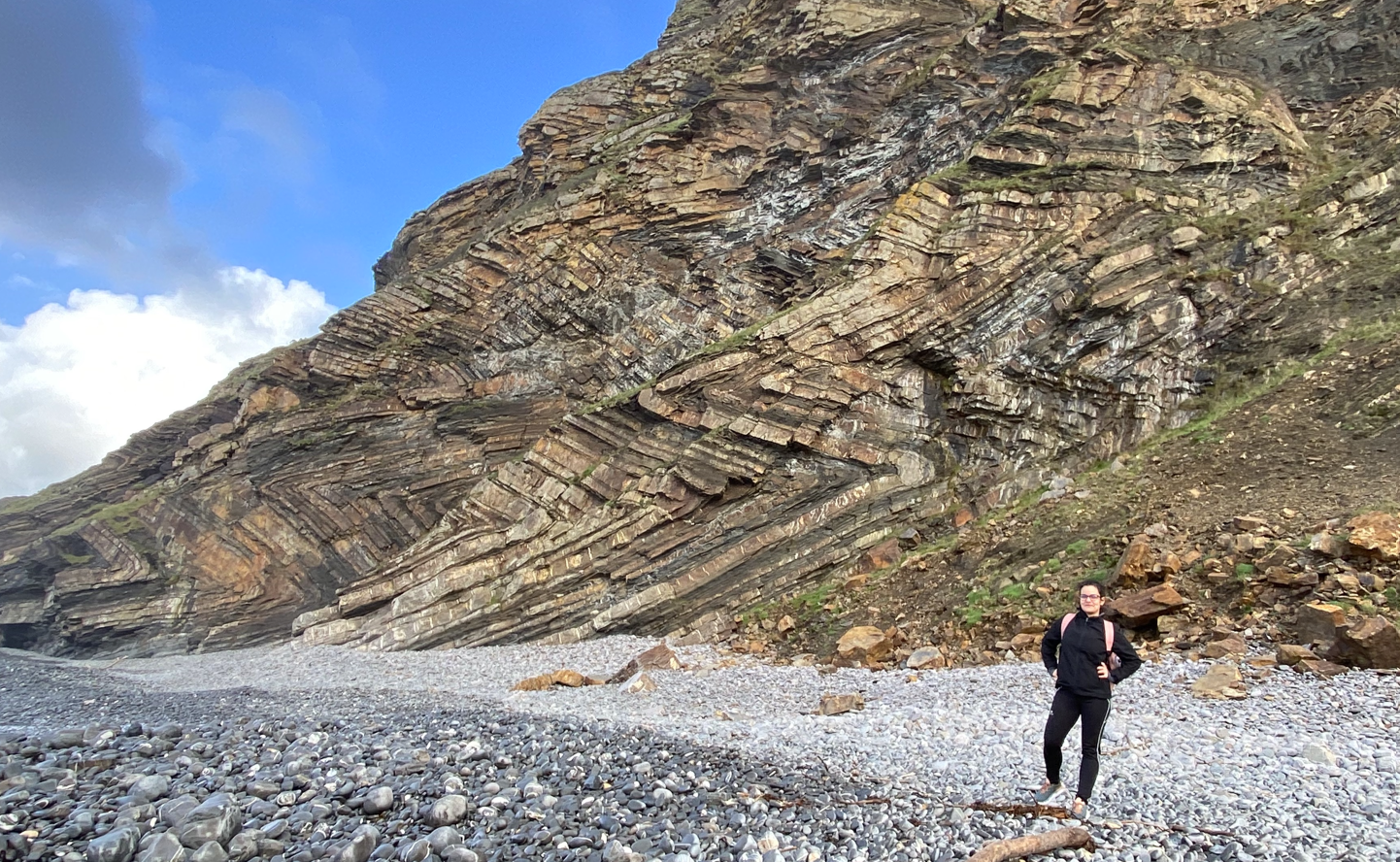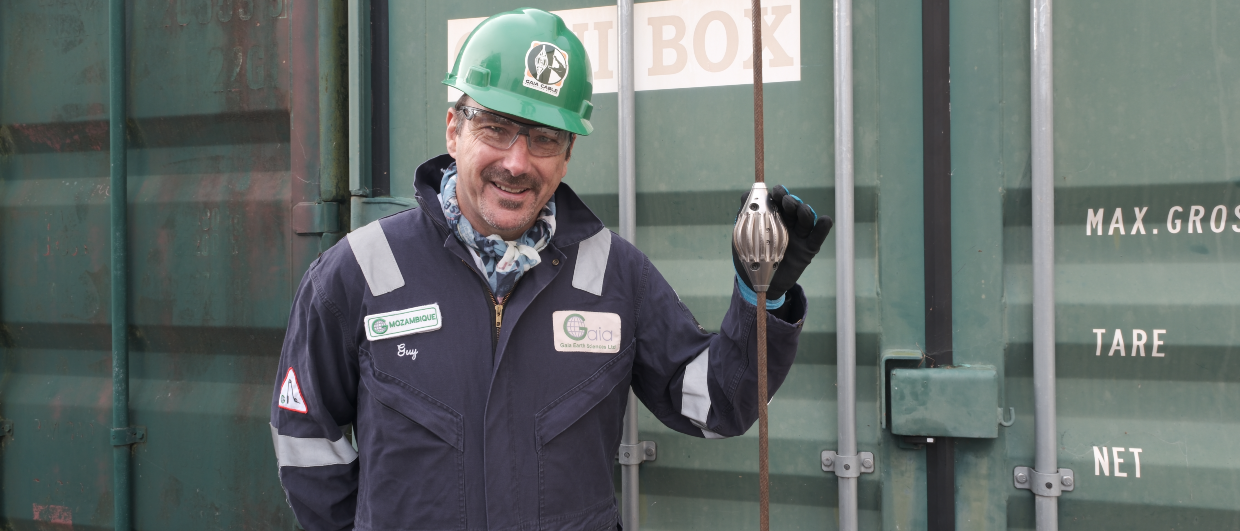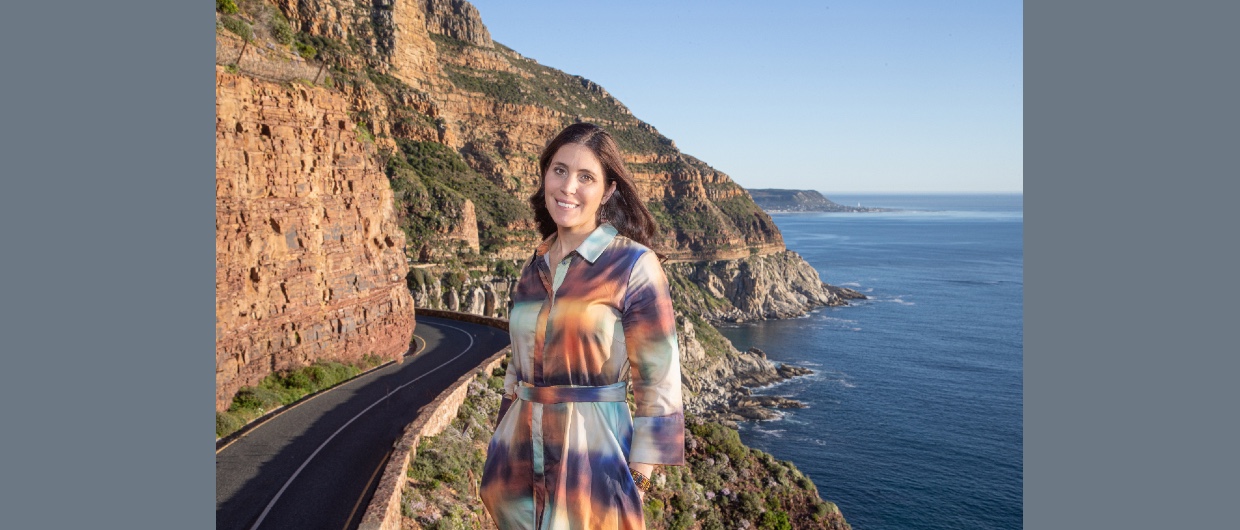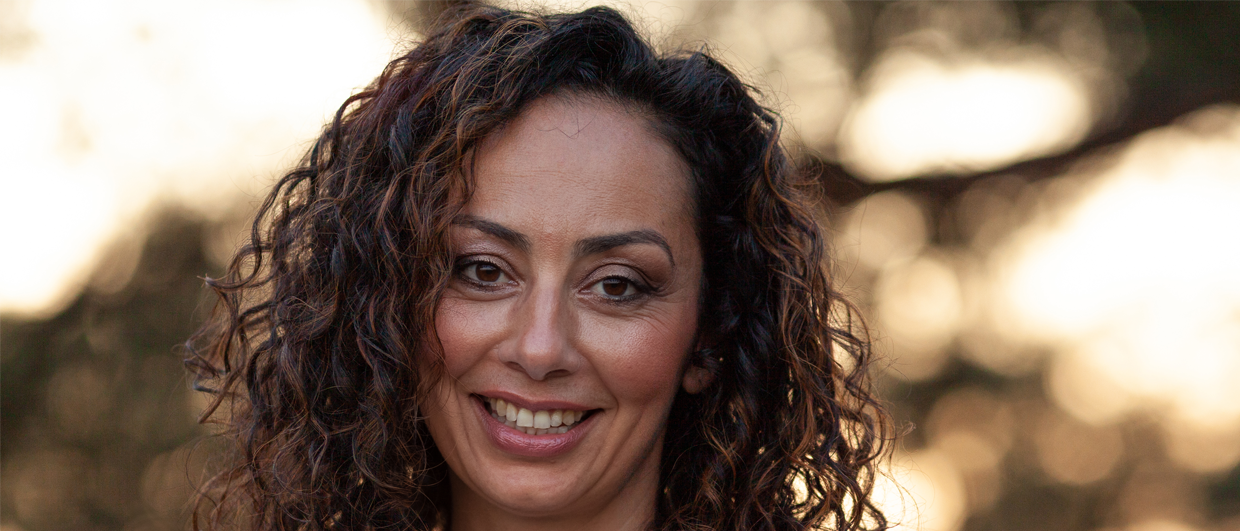“My fascination with geology started with asking myself a question”, says Clara Rodríguez Rondón. “I grew up in Venezuela, in a town called San Juan de Los Morros, in a landscape that is characterised by the presence of rolling hills and valleys, close to the town there are a series of enigmatic higher peaks that consist mainly of limestone. “I always wondered where “Los Morros” came from”, she says. “As my mother is a soil scientist, she took me to the mountains towards the end of secondary school when we had to do a little research project. We took some samples and analysed these in the lab. It really confirmed for me what I wanted to do.”
A young student
“I left school to go to university when I was 15 years old, and I already felt like an adult”, laughs Clara. It was a big step to leave home at that age and move to Caracas, the capital of Venezuela. “I started studying geophysical engineering, primarily because the nearest place where I could do a pure geology degree was too far away from home and this degree still had some geology as part of the curriculum.”
“I don’t know if I would recommend other people to do the same thing as I did, leaving school at such a young age to go to university, but I made it!
The last year of university included an exchange program with Oklahoma University, which was just great for a 19-year-old student; living on campus
at OU was a great experience.”
“When I was 21, and had successfully finished my geophysical engineering degree, I really felt like a grown-up and was ready for the world”, Clara continues. Straight away, she joined Schlumberger and the world opened up for her. She travelled to Indonesia for training, delivered presentations to clients all over the place before she became involved with the Petrel support team: First as a helpdesk support member, then as an on-site consultant
and instructor.

“At some point, when I was delivering a training class, making people go through the books that were so characteristic of the Petrel teaching courses, I said to myself; I want to be one of those geoscientists that I am delivering this training to! But to make that happen, I realized that I needed a master’s degree, and I started to look around for options.”
Clara then found out that obtaining a Master’s degree could be done in the UK in just a year. “So, I filed an application for a degree at Imperial College,
and I was accepted. I then told Schlumberger that I was leaving, only to realise that I couldn’t afford to live in London and pay for the degree myself… Fortunately, the company decided to sponsor me, on the premise that I would take a job with them upon completion of my master’s degree”, says Clara. “That sounded like a plan to me.”
Brazil and Salt
Clara’s PhD project was about salt stratigraphy, salt tectonic controls on sedimentation, and salt dissolution in the Santos Basin, offshore Brazil. The Santos Basin has never received the same attention as the Campos Basin when it comes to exploring the post-salt succession. But because a major 3D survey by CGG was available for interpretation, there were plenty of things for her to get stuck in.
One of the highlights of her work was the discovery of an entirely new depositional post-salt system that had not been identified before. “It was amazing to see how the salt-induced topography influences depositional systems”, Clara says, “and it is amazing how much one can reconstruct through meticulous analysis of seismic data.”
Falling in love with salt
As Clara embarked on her master’s course, her husband, who also worked for Schlumberger at the time, moved to the UK as well. So when she finished the course, she asked if it was possible to stay in the UK for a while.
“I was offered a position at Schlumberger WesternGeco, and got involved with seismic interpretation multiclient projects all over Africa. It was a major change in my career”, she says, “but it was surely something that I was ready for. Working with industry experts such as Malcolm Francis and trying to
unravel the sedimentary and tectonic history of all these basins was a great experience.”
“It was also the time when I fell in love with salt, and the myriad of things that seismic data allows to interpret when looking at the interplay of salt- and deep-water sedimentation. And since I happened to be on a four-year cycle in terms of my career”, Clara jokes, “I decided to talk to Chris Jackson from Imperial and asked him if there were any opportunities to do a PhD in this !eld. I had some savings so even when the company would only sponsor my tuition fee this time, I could still afford it.”
And it all happened! With two young daughters to take care of as well, Clara embarked on her PhD project on the Santos Basin in Brazil. “Because I had two kids and with the third one on the way when I was approaching the end of my project, it took a bit longer than 5 years. But when I finished without corrections, I certainly had a major feeling of achievement and felt I had demonstrated that it surely was possible to fulfill my dream of becoming a recognized geoscientist”, she says.
“The Rodriguez from the Santos Basin is a woman!”
Clara never travelled to Brazil during her PhD project, but more recently she finally got the opportunity to go to Rio and present her work at the International Congress of the Brazilian Geophysical Society. And because she had published her work in scientific journals, her work was already well-known to people at Petrobras, the national oil company. “When I met with the group I presented for, I overheard a person saying: “The Rodriguez of the Santos Basin is a woman!” It confirms the gender bias that still exists in the industry, and it is something that Clara feels passionate about tackling.
A single trip to Houston
After completing her PhD in London, Clara talked to Schlumberger again to see if there was an opportunity for her. “There was”, she continues, “but not really around the corner. I was offered a position in Houston, to again work in the multiclient team of WesternGeco, but now looking at the Gulf of Mexico. From that point of view, it was very exciting to close the loop from studying the sedimentary basins of the South Atlantic and now the Gulf of Mexico.”
The working environment in which Clara arrived in Houston was quite different from what she had seen in the UK. “I was the only woman in a team of 7 men, and that felt a bit uneasy at times, and it was exacerbated by the fact that competition between people is quite fierce in that part of the world”, she says.
“We had moved as a family, with my husband giving up his job in London and the kids having to settle into a new school. It was all quite a hectic time, and you constantly feel the pressure to make things a success. For me, this was a time when social media became a channel to connect to other people around the world.”
Social media
It was at that time that Clara initiated a network of women working in Geoscience in the Latin American region, GeoLatinas. The initiative has grown
steadily over the years to what is now an informal network of around 1,000 women with a geoscience background.
“I think it is important, especially given the gender bias that still exists out there, to give female geoscientists more of a voice”, says Clara. Social media has been instrumental in setting up this network. “Especially Twitter (now X), Facebook and Instagram have shown to be great platforms to
spread our message, organize talks and give our members more visibility. We continue our activities until today.”
“It has also brought me a lot as a person”, says Clara. “Being invited to talk at conferences, visiting universities, so much of that is thanks to the visibility that we created through posting our activities on social media.”
No home to go to
Whilst working on exploration projects in the Mexican part of the GOM in Houston, Clara got the idea that working for an operator active in the same area would be a logical next step.
A few years before, Petronas had made an ambitious entrance into Mexico and had staffed up a sizeable group of geoscientists. “I knew someone from Petronas from my time at Imperial”, Clara explains, “so I got in touch with him to ask if there was any need for a salt expert in their Mexico exploration team.” And they did! Early 2020, as the pandemic started to unfold, Clara moved to Mexico City, ready to start her new job. “But as soon as I arrived, they told me that I couldn’t go to the office the next day”, she says.
Clara worked from the staff apartment for a couple of weeks, until Petronas said she had to go “home”. “But I had no home to go to! I had no Venezuelan passport anymore, and I had resigned from my job in the US and I had therefore lost my Visa, and we had left the UK thinking we wouldn’t come back. Ultimately, a lawyer advised us to go back to the UK and wait for things to improve. So we ended up living from our suitcases for a year instead of a few weeks”, Clara laughs.

Nobody wanted to turn on the cameras
How was it to learn to know a new team from the other side of the world? “At the start of the pandemic, nobody wanted to turn on their cameras”, says Clara. “There was not the culture of doing that yet, so at some point I asked the person I was talking to switch on the camera. And it worked, people got used to it a little more and it surely helped build a professional relationship, even though I was so far away.”
In September 2021, the family finally moved to Mexico City. “Mexico is the closest to home I got in many years, and in many respects that was great and made me feel at home”, Clara says. “Working for an operator finally meant that we owned the blocks, we owned the wells, and we owned the results! “at was such a difference from what I had seen before.”
A very complex mix
“Through the experience of my PhD and the work I had done, I quite naturally became the salt and sediment fairway expert”, Clara continues. “And there is a lot to do on that front. It is the most complex sedimentary basin I’ve worked on so far. You’ve got everything you can imagine; salt tectonics, shale tectonics, volcanic activity during deposition, post-depositional deformation and syn-depositional deformation.
This, in combination with the fact that the geophysical expression of all these factors combined is not always that clear, makes it quite a challenge
to successfully explore for hydrocarbons. That’s why we did see quite a few surprises in the wells we drilled and the seismic we interpreted. In turn, this is probably part of the explanation why a few companies have decided to leave Mexico.”
“Petronas also downscaled its footprint in Mexico a lot last year”, Clara says. “I was in charge of a regional project, integrating all the data from six of
the ten blocks the company participated in. But then, the number of blocks was reduced drastically.” As a result, the company let many people go in
November last year. “I was part of that. Initially, I had hopes of being able to stay, also because I had just achieved the principal level, but that did not materialize unfortunately.”
A new chapter
“It was a true shock to be called to a venue and hand over my laptop”, says Clara. “It all goes so fast, it was overwhelming.”
“But shortly after it happened, I got that nagging question, what do I now do with all the things I learned? And I wasn’t the only one thinking that. Together with a few people I had closely worked with, we decided that this was the right time to set up a consultancy and training company. And that’s how we set up ExploreTerra. We feel that we have a lot of expertise to offer to the upstream sector when it comes to exploration and appraisal studies, especially when looking at our joint experience in Mexico.”
“In addition, we also want the ExploreTerra vehicle to be a place where people with relevant experience but who may not have paid work at the moment
will be able to gain more visibility and potentially deliver courses to companies that need their expertise”, Clara continues. “The GeoLatinas community
nicely fits into this model.”
Clara and her family have now moved back to the UK, where a new chapter has started. “I’ll admit, ExploreTerra is at a very early stage, is not paying our bills at the moment”, she says. “That’s why I’m also looking for other job opportunities.”*
Given her 21-year successful career, very much characterised by grit, and a lot of salt, I have little doubt that she will find another exciting position, and
look forward to following how the next few years will unfold.*
*Between the time of writing this story and publication, Clara secured a job as exploration geoscientist at Harbour Energy in Aberdeen.




